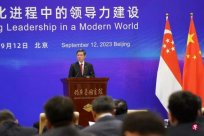India's Twenty Group (G20) summit ended on the weekend last weekend.The summit was not favored by the outside world because the Sino -Russian heads of state did not attend and the pace of member states were inconsistent, but the summit did not have a pair of papers in the end.
After the opening of the New Delhi Summit, the first progress achieved was to achieve G20 expansion, and officially accepted the African alliance to join as a permanent member.This is a strong recognition of the importance of Africa, and the G20 is included in the African Union under the suggestion of India, and it also helps India to move towards the status of the global southern world leader.
It was originally thought that the G20 might not be able to issue a joint statement because the member states could not reach a consensus on the Russian and Ukraine war issues, but on the first day of the summit, Indian Prime Minister Modi announced that the G20 had passed a joint statement.
Discovery to avoid directly named the Ukraine War, and did not condemn Russia. It only emphasized that "all countries must avoid force in force or use force to seize territory and violate any country's territorial integrity, sovereignty or political independence."
This is the result of compromise.Although the substantial content of cooperation in the statement, it is extremely difficult to make progress under the lack of trust in the current member states, but finally there is a set of words that can be accepted by all parties, which resolves the embarrassment of joint statement.
In this home diplomacy in New Delhi, it is also noticeable to move on the sidelines.During the G20, many countries such as the United States announced that it will cooperate to establish a new economic corridor, connect railways and ports in the Middle East and South Asia, and strengthen the interconnection and economic integration of Asia, Arabia and Europe.
This plan described by US President Biden as "changing the rules of the game", the full name is "India-Middle East-European East-Europe Economic Corridor (IMEC)".Saudi Arabia, the European Union, India, the UAE, France, Germany and Italy.
Although the eight characters such as the specific scheme and construction schedule of the IMEC have not been skimmed, the multiple strategic intentions carried behind this ambitious plan have surfaced.In terms of trade, this corridor is connected to India, the Middle East and Europe, and aims to connect with a large Indian market with a population of 1.4 billion; signed countries also hope that it can boost the Middle East economy and promote the normalization of Israeli and Saudi Arabia.Western media refer to IMEC as "the road of modern spices", and once this plan is released, it is also reminiscent of China's "Belt and Road" initiative.Today, the United States, India, the Middle East, and European countries have put forward the "road of spices", which is obvious that the "Silk Road" is obvious.
The vision of the "Fast Road" is beautiful, but there will always be a gap between ideals and reality.Is this economic corridor painting a big cake? It is unknown how to land on the ground.
Some political observer pointed out that compared with the "Silk Road" in history, the "Snake Road" is a new concept.The railway is difficult, not to mention that some countries along the corridor still have sharp geopolitical contradictions.
The huge amount of money to build a "road of spices" is also a problem.Infrastructure construction has a large investment in the early stage of construction, small return, and long income cycle. Before the source of the project funding is clear, the landing of the "road of spices" will always be a big question mark.
However, whether the "Fast Road" can challenge the "Belt and Road", it also depends on the future advancement of the "Belt and Road".
Entering the "Belt and Road" initiative in the 10th year is based on infrastructure and interconnection as the main goal, providing solutions for some developing countries that hinder economic development due to infrastructure gaps.However, the controversy around the “Belt and Road” has never been broken in these years. Due to the lack of professional and fine plans in the advancement process, the problems such as debt, corruption, and white elephant project caused by the “Belt and Road” project have been criticized.After the concept of the "Belt and Road" is generalized, it has also been given the function of China's external projection influence, which has discounted the nature of business and trade.
As of June this year, China has signed the "Belt and Road" cooperation documents with more than 180 countries and international organizations, but some countries have changed from early positive to negative, such as Italy recently planned to "retreat".For the "Belt and Road", a policy of long -term opening up in China, Beijing has not yet given a clearer future positioning and development direction.
After the New Delhi G20, there was an evaluation of American public opinion. The Chinese head of state did not attend the summit. The United States and the allies made Modi win a game, especially in the joint statement to make the concession to dilute the Russian and Ukraine.India's promotion is the status as a large country to compete with China, and India has therefore become the greatest hope for the United States to isolate China.
Whether it is the "Slood Road" challenge the "Silk Road" or India's hedge of China's global influence, it is actually too early, but for Beijing, these are indeed a complex geopolitical environment.Alerts that cannot be ignored.Whether these actions can be dug into China's walls in the end depend on whether China's own economic development can continue to support external influence, and what kind of international cooperation between China wants to become and what kind of international cooperation relationships.




